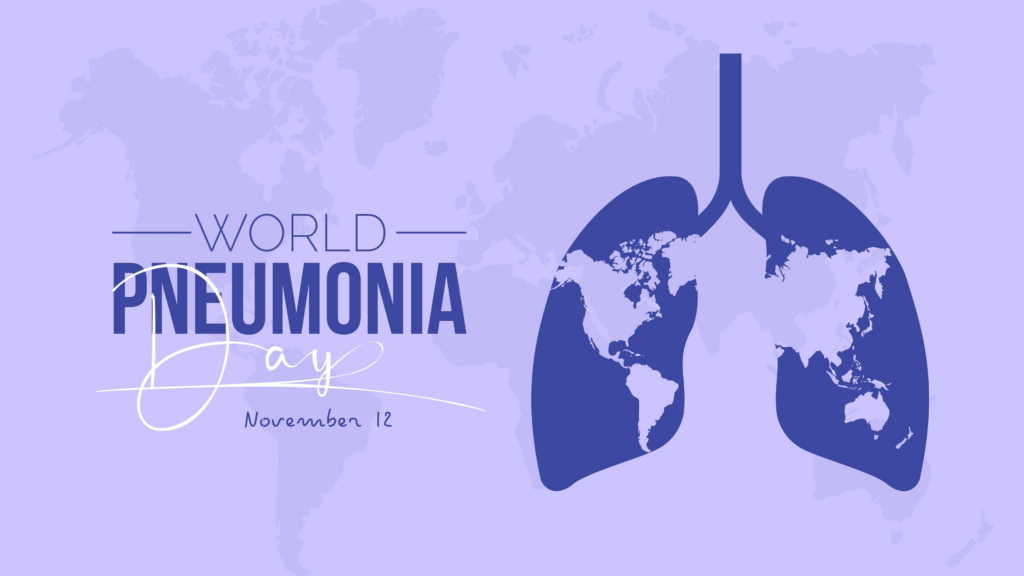On World Pneumonia Day 2024, observed on November 12, the focus shifts to one of the world’s most preventable and treatable diseases that remain a leading cause of death for children under five and a significant risk to vulnerable populations globally.
Pneumonia is a lung infection that can be caused by viruses, bacteria or fungi and can result in millions of hospitalizations and deaths annually. World Pneumonia Day is a critical reminder of the need for enhanced diagnostics, preventive measures and accessible treatments.
World Pneumonia Day 2024 provides an opportunity to examine the latest advances in pneumonia treatment and prevention — and the role that healthcare and life sciences industries play in reducing its global impact.
Pneumonia claims nearly 1 million lives each year, with the highest mortality rates among children and those in low-income countries where healthcare resources are limited.
The Global Burden of Pneumonia
According to the World Health Organization (WHO), pneumonia is responsible for approximately 14 percent of deaths in children under five and accounts for more deaths in this age group than any other disease. In addition, older adults, people with chronic health conditions and immunocompromised individuals are at heightened risk for pneumonia.
Moreover, in low- and middle-income countries, lack of healthcare access increases the disease’s impact, as limited diagnostics, vaccination coverage and medical resources limit early detection and treatment.
XTALKS WEBINAR: Accelerating Viral Vector Manufacturing: The Use of Automation from Early Stage to QC Release
Live and On-Demand: Monday, December 9, 2024, at 11am EST/4pm GMT/5pm CET
Register for this webinar to explore how advanced robotics, digital tools and design of experiments are revolutionizing viral vector manufacturing, optimization and quality control (QC) release testing.
Diagnostics for Pneumonia Detection
Diagnostics-related advancements have played an important role in the fight against pneumonia. Traditional diagnostic methods often require clinical expertise, chest X-rays or microbiological cultures.
Currently, rapid diagnostic tests, molecular diagnostic tools and point-of-care solutions are improving pneumonia detection in resource-limited environments. Portable chest X-ray machines, AI-based diagnostic tools and rapid tests for detecting bacterial and viral pathogens assist in making timely and accurate diagnoses.
Furthermore, companies that are focused on diagnostic innovation are not only contributing to more efficient treatment pathways but are also driving down the costs of care. For healthcare providers, investing in advanced diagnostics can reduce hospital readmissions and improve patient outcomes by facilitating quick and appropriate treatment.
Treatment Advances: From Antibiotics to Targeted Therapies
Pneumonia treatment often involves antibiotics for bacterial infections, although antibiotic resistance is an increasing concern worldwide. The increase in the multidrug-resistant strains of Streptococcus pneumoniae and other pathogens underscores the need for new antibiotics and therapeutic approaches. Thus, to address drug-resistant infections, pharma and biotech companies are developing novel treatments such as bacteriophage therapies, immunomodulators and monoclonal antibodies.
Moreover, the development of antiviral treatments and vaccines against respiratory syncytial virus (RSV) and other viral causes of pneumonia offers hope for reducing the disease burden in high-risk groups. For example, recent clinical trials and regulatory approvals for RSV vaccines are notable milestones that indicate advancements in preventing viral pneumonia in both children and elderly adults.
Novel Antibiotics for Resistant Strains
New antibiotics, including omadacycline and lefamulin, have shown efficacy against multi-drug resistant pathogens such as Staphylococcus aureus. These antibiotics target bacteria through mechanisms distinct from traditional antibiotics, thus helping to reduce the impact of resistant strains.
The US Food and Drug Administration (FDA) recently approved Xacduro, a combination of sulbactam and durlobactam, for treating hospital-acquired and ventilator-associated bacterial pneumonia caused by Acinetobacter baumannii-calcoaceticus complex.
Monoclonal Antibody Therapies
Monoclonal antibodies are gaining traction as targeted treatments for bacterial and viral infections. For instance, suvratoxumab, a monoclonal antibody targeting S. aureus, has demonstrated potential in preventing hospital-acquired pneumonia. These antibodies could offer targeted, immune-based approaches that do not contribute to antibiotic resistance.
Phage Therapy
Phage therapy, which uses bacteriophages (viruses that infect and destroy bacteria), has shown promise in cases where antibiotic-resistant bacteria cause pneumonia. Although still in experimental stages, phage therapy is particularly promising for treating infections resistant to multiple antibiotics and could become an important tool for the future of bacterial pneumonia treatment.
Antiviral Treatments for RSV and Influenza
RSV and influenza are major viral causes of pneumonia, especially in children and the elderly population. New RSV vaccines (such as those developed by Pfizer and GSK) and antiviral drugs like baloxavir marboxil (for influenza) offer ways to reduce viral pneumonia incidence. These innovations can help prevent viral pneumonia complications in high-risk groups.
Adjunctive Therapies Using Immune Modulators
Immune modulators, which help to regulate the body’s immune response, are increasingly recognized as supportive treatments for pneumonia. These therapies work by controlling excessive inflammatory responses in the lungs.
Drugs such as dexamethasone, an anti-inflammatory corticosteroid, have shown efficacy in reducing mortality in severe cases of bacterial pneumonia.
Preventive Strategies: Vaccination and Public Health Initiatives
Vaccination is a cornerstone for pneumonia prevention. Both the pneumococcal conjugate vaccine (PCV) and Haemophilus influenzae type b (Hib) vaccine can help prevent bacterial pneumonia in children and adults.
Life sciences companies, in collaboration with global health organizations, are scaling up vaccine production, distribution and affordability initiatives to ensure that people in low-resource settings can access these lifesaving interventions.
Furthermore, public health awareness campaigns, improved access to clean water and nutrition programs can play an important role in pneumonia prevention. These efforts underscore the importance of collaborative efforts between the healthcare industry, government bodies and non-profit organizations for improving population health outcomes.
Read more: Arexvy Shows Strong Efficacy Over Three RSV Seasons in New Phase III Data
The Role of Digital Health and Remote Monitoring
The rise of digital health technologies has opened new pathways for pneumonia prevention and management. Telemedicine services, remote monitoring devices and mobile health (mHealth) applications allow healthcare providers to monitor symptoms, track disease progression and remotely manage at-risk patients. These technologies are particularly beneficial in rural and underserved regions where access to traditional healthcare services may be limited.
Collaborating for a Healthier Future
World Pneumonia Day 2024 serves as a call to action for healthcare and policy leaders worldwide to strengthen their commitment to reducing pneumonia’s toll on global health. Collaborative efforts, from research and development to public health interventions, are important for addressing the challenges posed by this disease.
By leveraging innovative diagnostics, advancing treatment options, expanding vaccination efforts and embracing digital health solutions, industry stakeholders can play an important role in reducing the global burden of pneumonia. As healthcare systems continue to evolve, these collective efforts will help achieve the ultimate goal: a world where preventable diseases like pneumonia no longer pose a significant threat to human health.











Join or login to leave a comment
JOIN LOGIN